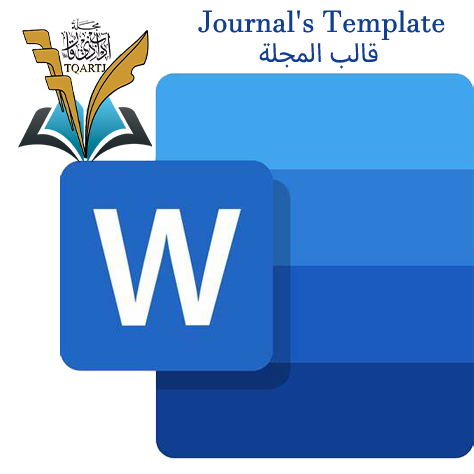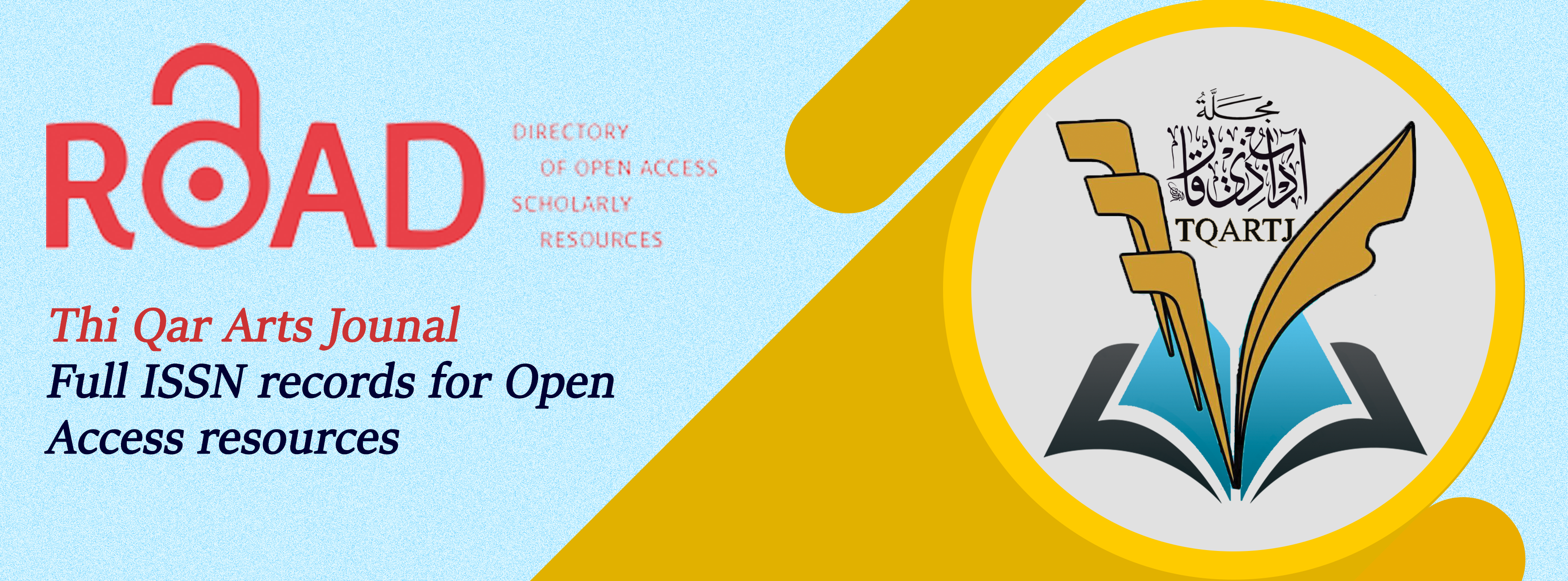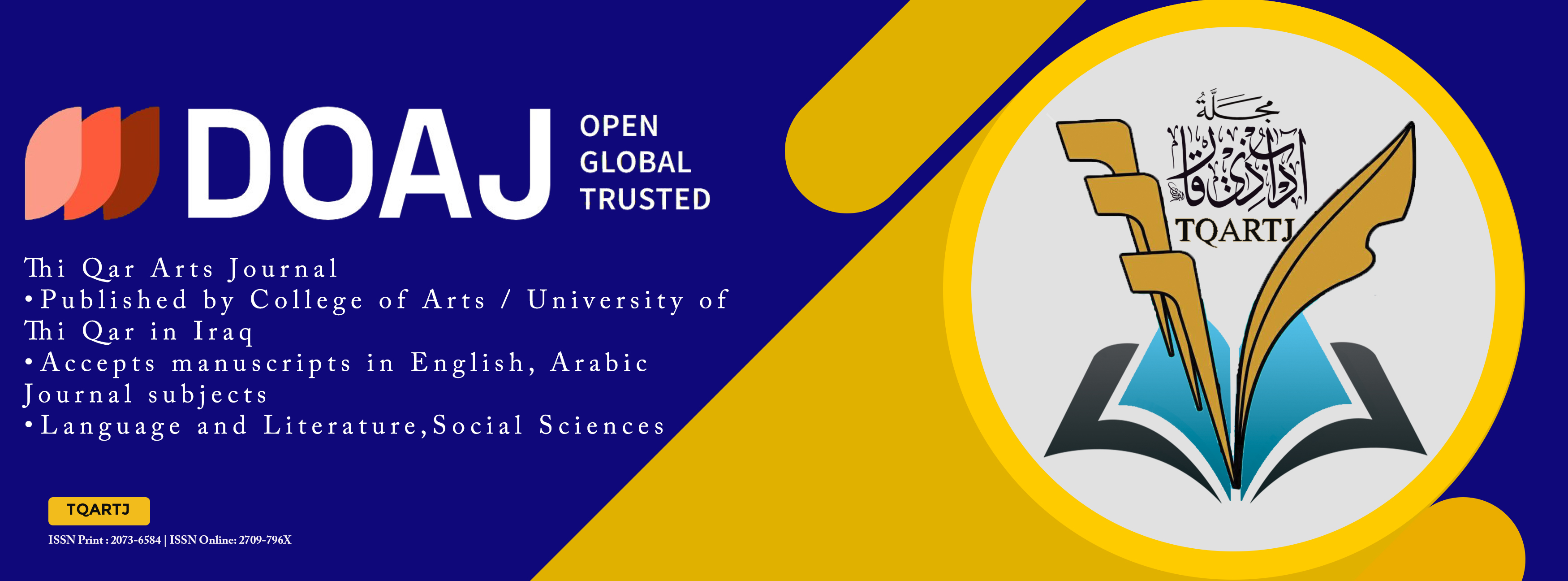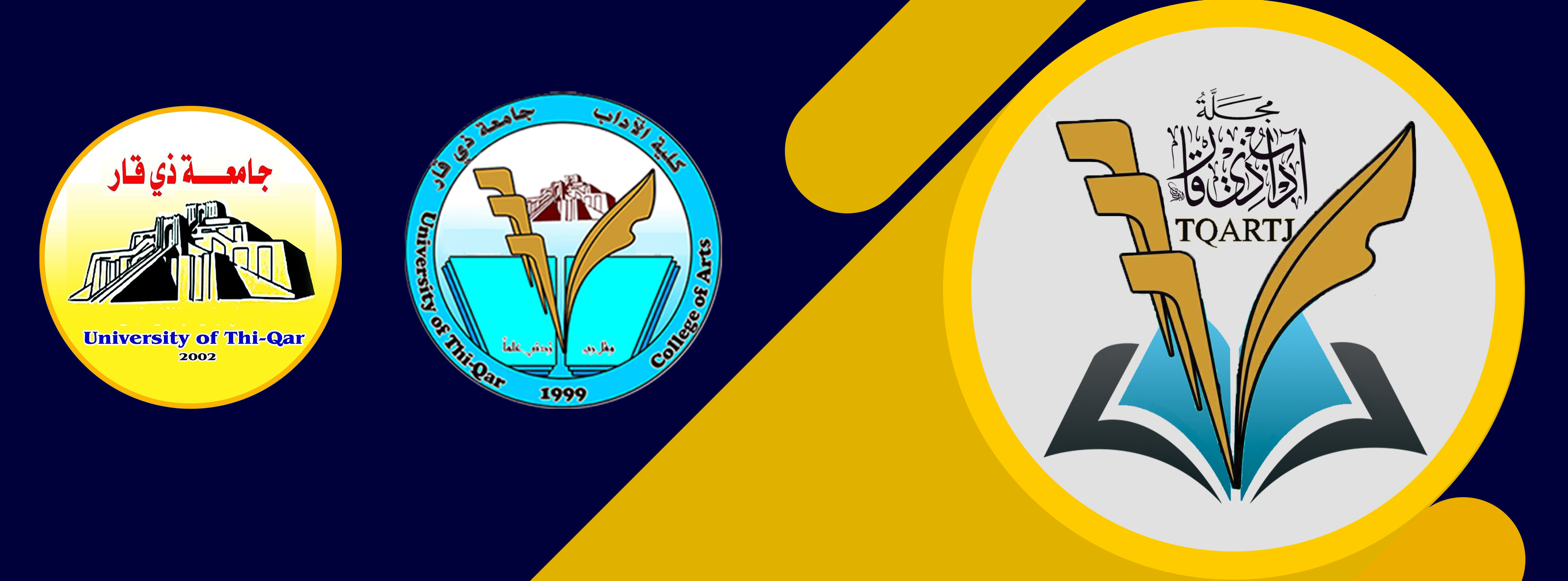Ethics Publishing
Publication Ethics
PUBLICATION ETHICS AND PUBLICATION MALPRACTICE STATEMENT
The ethical policy of TQARTJ is based on the Committee on Publication Ethics (COPE) guidelines and complies with the TQARTJ Editorial Board codes of conduct. Readers, authors, reviewers, and editors should follow these ethical policies once working with TQARTJ. In addition, the ethical policy of TQARTJ is liable to determine which of the typical research papers or articles submitted to the Journal should be published in the concerned issue. For information on this matter in publishing and ethical guidelines, please visit http://publicationethics.org.
Duties and Responsibilities of Publishers
- TQARTJ is committing to ensure that editorial decisions on manuscript submissions are final.
- TQARTJ is promising to ensure that the decision on manuscript submissions is only made based on professional judgment and will not be affected by any commercial interests.
- TQARTJ is committing to maintaining the integrity of academic and research records.
- TQARTJ monitors the ethics of Editor-in-Chief, Associate Editors, Editorial Board Members, Reviewers, Authors, and Readers.
- TQARTJ is always checking the plagiarism and fraudulent data issues involving in the submitted manuscript.
- TQARTJ is always willing to publish corrections, clarifications, and retractions involving its publications as and when needed.
Duties and Responsibilities of Editors
- The Editors of the Journal should have the full authority to reject/accept a manuscript.
- The Editors of the Journal should maintain the confidentiality of submitted manuscripts under review or until they are published.
- The Editor-in-Chief should decide on submitted manuscripts, whether published or not, with other editors and reviewers.
- The Editors of the Journal should preserve the anonymity of reviewers.
- The Editors of the Journal should disclose and try to avoid any conflict of interest.
- The Editors of the Journal should maintain academic integrity and strive to meet the needs of readers and authors.
- The Journal editors should be willing to investigate plagiarism and fraudulent data issues and willing to publish corrections, clarifications, retractions, and apologies when needed.
- The Editors of the Journal should have the limit themselves only to the intellectual content.
- The Journal editors must not disclose any information about submitted manuscripts to anyone other than the corresponding author, reviewers, potential reviewers, other editorial advisers, and the publisher, as appropriate.
- Unpublished materials disclosed in a submitted paper will not be used by the editor or the editorial board members for their own research purposes without the author's explicit written consent.
Duties and Responsibilities of Reviewers
- The Reviewers of the Journal should assist the Editors in deciding to publish the submitted manuscripts.
- The Reviewers should maintain the confidentiality of manuscripts, which they are invited to review.
- The Reviewers should provide comments in time that will help editors to make a decision on the submitted manuscript to be published or not.
- The Reviewers are bound to treat the manuscript received for peer reviewing as confidential and must not use the information obtained through peer review for personal advantage.
- The Reviewers comments against each invited manuscript should be technical, professional, and objective.
- The Reviewers should not review the manuscripts in which they have found conflicts of interest with any authors, companies, or institutions.
- The Reviewers should disclose and try to avoid any conflict of interest.
Duties and Responsibilities of Authors
- Manuscripts must be submitted in English or Arabic and should be written according to sound grammar and proper terminology.
- Manuscripts must be submitted to understand that they have not been published elsewhere and are not currently under consideration by another Journal published by or any other publisher.
- The submitting corresponding author is responsible for ensuring that all the other coauthors have approved the manuscript article's publication.
- To sustain the peer review system, authors have an obligation to participate in the peer-review process to evaluate manuscripts from others.
- It is also the authors' responsibility to ensure that the manuscripts emanating from a particular institution are submitted with the approval of the necessary institution.
- It is a condition for submitting a manuscript that the authors permit editing of the paper for readability.
- Authors are requested to clearly identify who provided financial support for the conduct of research and/or preparation of the manuscript and briefly describe the role of the founder/ sponsor in any part of the work.
- All authors have agreed to allow the corresponding author to correspond with the editorial office to review the edited manuscript and proof.
- When the author(s) discovers a significant error or inaccuracy in his/her own published work, it is the author’s obligation to promptly notify the Journal editor or publisher to retract or correct the manuscript.
- All authors must know that the submitted manuscripts under review or published with TQARTJ are subject to screening using Plagiarism Prevention Software. Plagiarism is a serious violation of publication ethics.
- All authors must ensure that all authors have read the submission final checklist before being submitted to the TQARTJ.
- Peer review process: TQARTJ is a double-blind peer-reviewed electronic and print quarterly publication concerned with all aspects of Humanities. This process, as well as any policies related to the Journal ’s peer review procedures, is clearly described on the Journal ’s Web site (https://jart.utq.edu.iq/index.php/main/4 ).
- Governing Body: TQARTJ has a solid editorial board whose members are recognized experts in the subject areas included within the Journal ’s scope. The full names and affiliations of the Journal ’s editors are provided on the Journal ’s Web site (https://jart.utq.edu.iq/index.php/main/about/editorialTeam ).
- Contact information: Journal is provided the contact information for the editorial office of TQARTJ (https://jart.utq.edu.iq/index.php/main/about/contact ).
- Author fees / Access: The Journal database is fully open access. Full text of published articles is available for everyone who can access the Journal website free of cost. Besides, the authors should pay the article publication fee, which is , assistant lecturer and lecturer (40000 IQD), Assistant professor (60000 IQD), professor (750000 IQD), and for researchers out of Iraq (100$) for all scholarly ranks.
. - Identification of and dealing with allegations of research misconduct: Editor-in-Chief takes reasonable steps to identify and prevent the publication of papers where research misconduct has occurred, including plagiarism, citation manipulation, and data falsification/fabrication, among others.
- Web site: A Journal ’s Web site (https://jart.utq.edu.iq/index.php/main ) contains that care has been taken to ensure high ethical and professional standards.
- Name of Journal : The Journal name of Iraqi Journal of Humanities Science and (TQARTJ) has unique and not be one that is easily confused with another Journal
- Conflicts of interest: Authors are asked whether impending conflicts do or do not exist while submitting their articles to TQARTJ through the Conflict of Interest Disclosure form.
- Publishing schedule: The periodicity at which a Journal publishes is clearly indicated (https://jart.utq.edu.iq/index.php/main/schedule).
- Archiving: A Journal ’s plan for electronic backup and preservation of access to the Journal content is clearly indicated (https://jart.utq.edu.iq/index.php/main/11 ).
Violation of Publication Ethics
- Plagiarism: Plagiarism intentionally uses someone else’s ideas or other original material as if they are one's own. Copying even one sentence from someone else’s manuscript, or even one of your own that has previously been published, without proper citation, is considered by TQARTJ Journal s as plagiarism. All manuscripts under review or published with JARUTQ are subject to screening using plagiarism prevention software. Thus, plagiarism is a serious violation of publication ethics. The development of CrossCheck is a service that helps editors to verify the originality of papers. CrossCheck is powered by the Ithenticate software from iParadigms, known in the academic community as providers of Turnitin. For a searchable list of all Journal s in the CrossCheck database, please visit www.ithenticate.com/search.
- Data Fabrication and Falsification: Data fabrication and falsification means the researcher did not carry out the study but made up data or results and recorded or reported the fabricated information. Data falsification means the researcher did the experiment but manipulated, changed, or omitted data or results from the research findings.
- Simultaneous Submission: Simultaneous submission occurs when a manuscript (or substantial sections from a manuscript) is submitted to a Journal when it is already under consideration by another Journal .
- Duplicate Publication: Duplicate publication occurs when two or more papers, without full cross-referencing, share essentially the same hypotheses, data, discussion points, and conclusions.
- Redundant Publications: Redundant publications involve the inappropriate division of study outcomes into several articles, most often consequent to the desire to plump academic vitae.
- Improper Author Contribution or Attribution: All listed authors must have made a significant scientific contribution to the research in the manuscript and approved all its claims. Don’t forget to list everyone who made a significant scientific contribution, including students and laboratory technicians.
- Citation Manipulation: Citation Manipulation includes excessive citations in the submitted manuscript that do not contribute to the scholarly content of the article and have been included solely to increase citations to a given author’s work or articles published in a particular Journal . This leads to misrepresenting the importance of the specific work and Journal in which it appears and is thus a form of scientific misconduct.
- Sanctions: If there are documented violations of any of the above-mentioned policies in any Journal , regardless of whether or not the violations occurred in a Journal , the following sanctions will be applied: (i) Immediate rejection of the infringing manuscript, (ii)Immediate rejection of every other manuscript submitted to any Journal published by any of the authors of the infringing manuscript, (iii) Prohibition will be imposed for a minimum of 36 months against all of the authors for any new submissions to any Journal , either individually or in combination with other authors of the infringing manuscript, and (iv) Prohibition against all of the authors from serving on the Editorial Board of any Journal .
Once TQARTJ confirms a violation against JARUTQ ’s publication ethics, TQARTJ addresses ethical concerns diligently, following an issue-specific standard practice as summarized below.
- The first action of the Journal Editor is to inform the Editorial Office of JARUTQ by supplying copies of the relevant material and a draft letter to the corresponding author asking for an explanation in a nonjudgmental manner.
- If the author’s explanation is unacceptable and it seems that serious unethical conduct has occurred, the matter is referred to the Publication Committee via Editorial Office. After deliberation, the Committee will decide whether the case is sufficiently serious to warrant a ban on future submissions.
- If the infraction is less severe, the Editor, upon the advice of the Publication Committee, sends the author a letter of reprimand and reminds the author of TQARTJ publication policies; if the manuscript has been published, the Editor may request the author to publish an apology in the Journal to correct the record.
- Notification will be sent to the corresponding author. Any work by the author responsible for the violation or any work these persons coauthored under review by the TQARTJ will be rejected immediately.
- The authors are prohibited from serving on the TQARTJ editorial board and serving as a reviewer for TQARTJ . However, TQARTJ reserves the right to take more action.
- In extreme cases, notifications will be sent to the authors' affiliations, and the authors are prohibited from submitting their work to TQARTJ for 5 years.
In serious fraud cases that result in the retraction of the article, a retraction notice will be published in the Journal and linked to the article in the online version. The online version will also be marked “retracted” with the retraction date














